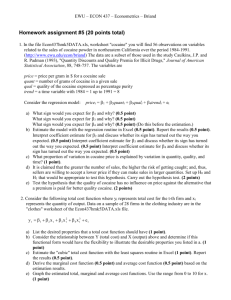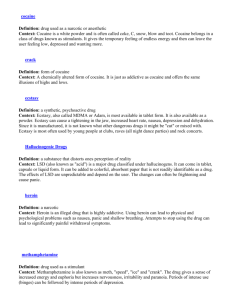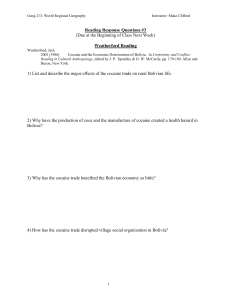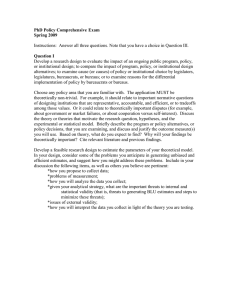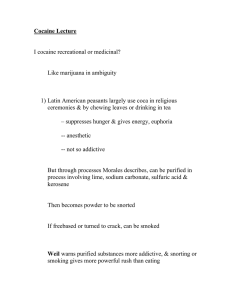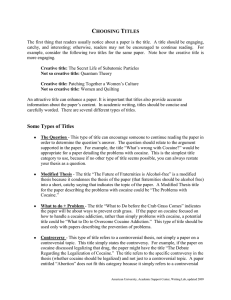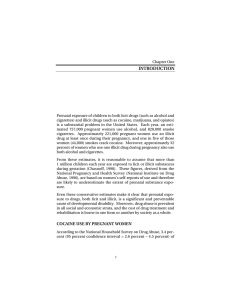File
advertisement
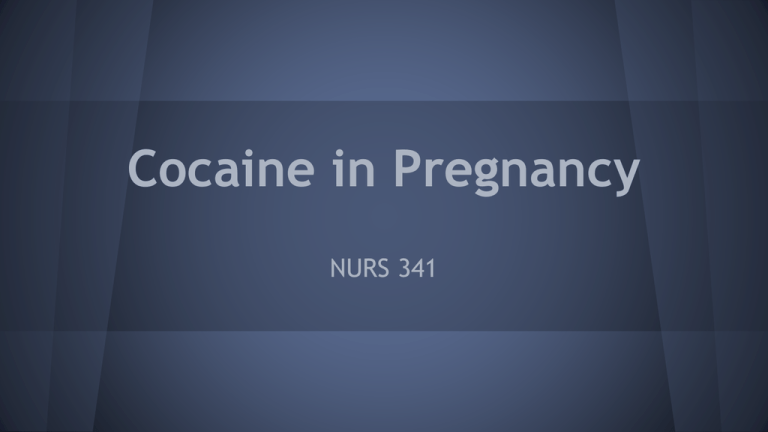
Cocaine in Pregnancy NURS 341 What is cocaine? ● Cocaine- an addictive drug with negative effects on the heart, brain, and emotions ● Cocaine blocks neurotransmitters in the brain (norepinephrine, serotonin, and dopamine) → o chemical buildup between nerve causes euphoria ● Euphoric feeling: o increasing sense of energy and alertness o extremely elevated mood o a feeling of supremacy Cocaine and pregnancy ● In 2005, approximately 4% of women using illicit drugs including cocaine ● In mothers’ that use cocaine during pregnancy, newborns have low birth weight, intrauterine growth restriction and decreased head circumference Treatment/Interventions in Antepartum 1) Referral to drug treatment and social services. 2) Educate! 3) Examine Attitudes. 4) Communication. Treatment/Interventions in Intrapartum 1) Prevent Injury: Admitting, set limits, and seizure precautions. 2) Pain Control: pharmacological and non pharmacological. Nurses Role ● Individual o early pregnancy interventions, consistent individualized care, education, and delivery management ● Physically o creating a non-bias environment, develop a plan of care ● Mentally o non-judgmental assessment, continued support Nursing Diagnosis 1. Deficient knowledge r/t cognitive limitations as evidenced by inappropriate behaviors 2. Risk for disturbed maternal/fetal dyad r/t substance abuse 3. Ineffective role performance r/t substance abuse as evidenced by inadequate self management Outcomes for Mom Preferably get them to stop drug use ● Education ● Social Services ● Pharmacologic Treatment Higher risk of complications ● Delay of prenatal care ● Inadequate pain control during labor ● Decreasing drug use decreases risks! Extended drug use or withdrawal Outcomes for Baby Neonatal Abstinence Syndrome (NAS) ● Affects several body systems ● Symptoms o Can be seen as early as 24 hours or as late as 72 hours after birth ● Affects 3.4 newborns in 1,000 births ● Strategies for comforting a newborn with NAS Numerous studies have shown 1. High rates of preterm birth 2. low birth weight and small for gestational age Continued Decreased Language Development Poor Neuromotor Functions Possible Cognitive Impairment? References ● GEARY Jr, F. H., & Turnquest Wells, M. A. (2013). Management of the Patient in Labor Who Has Abused Substances. Clinical Obstetrics & Gynecology, 56(1), 166-172. ● Gouin K, Murphy K, Shah PS, et al. Effects of cocaine use during pregnancy on low birthweight and preterm birth: systematic review and metaanalyses. Am J Obstet Gynecol 2011;204:340.e1-12. ● Keegan, J., Parva, M., Finnegan, M., Gerson, A., & Belden, M. (2010). Addiction in Pregnancy. Journal of Addictive Diseases,29(2), 175-191. doi:10.1080/10550881003684723 ● Ladwig, G., & Ackley, B. (2011). Mosby's guide to nursing diagnosis (4th ed.). Maryland Heights, Mo.: Mosby/Elsevier. ● Lunsford BK. (1995, May). Pregnancy and cocaine: a charge to nurses. Kansas Nurse, 5, 8-9. Retrieved from CINAHL. Murray, S. S., & McKinney, E. S. (2014). Foundations of Maternal-Newborn and Women’s Health Nursing (6th ed.). St Louis, MO: Elsevier Saunders. Nora, J. G. (1990). Perinatal cocaine use: maternal, fetal, and neonatal effects. Neonatal Network, 9(2), 45-52. Retrieved from PubMed. ● ●



